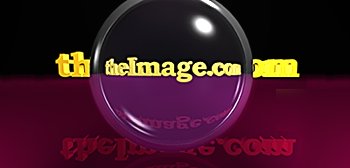
|
|
||||
|
Digital Photography
Compression Cont' |
||||||||||||||||
|
So What About Blur? We'll turn our attention to the BLUR type filter. Again I will use the mushroom image and apply one of the standard PhotoShop BLUR filters to the image in a repetitive manner. We will examine the histogram and interpret the results. |
||||||||||||||||
|
The BLUR filter. As in the sharpen examples, the first image is the original without filtration and the original histogram is just below. (Again please remember that the images shown here have been compressed with JPEG compression and the resultant histograms would have been slightly different if they were used. The histograms belonging to these images were taken from the originals and not the compressed image.)
The second image, was filtered using A GAUSSIAN BLUR set to 2.5. The Gaussian blur was used because it can be applied faster than the standard blurs. It is fairly obvious that the histogram is already showing a shift and is apparently growing in the centre region. The third photo has had the GAUSSIAN BLUR filter applied about 10 times in succession. The image is obviously far more blurred, and the histogram continues to grow in the central region and on close examination there is an obvious loss of histogram data from the white end (right side). In the final image, the GAUSSIAN BLUR was applied and reapplied over 100 times. The image no longer resembles the original, and the histogram is drastically changed. Notice though, that the direction of change has continued, and that data from the edges of the histogram has migrated toward the middle. Both the dark and light sides continue to lose density. Blurring causes an image to become more uniform and less contrasty. Data that once existed at each end of the histogram migrates inward and begins to center around the average tonal value of the entire image. SUMMARY The distortion filters have little or no effect on the histogram as they only displace pixels and do not change their contrast in any way. We know what a SHARPEN filter does,what a BLUR filter does, and that they work in opposite directions. One, the SHARPEN, tries to maximise contrast and the histogram shows that the filter causes an outward shift in the peaks. The other, the BLUR, decreases contrast throughout the image, and data on the histogram migrates inward. We'll now examine a few of the other filters and how the histogram is affected. Those filters which cause an outward shift will have the apparent effect of sharpening the image and those which migrate the data inward will have the apparent effect of blurring the data. |
|||||||||||||||
|
|
|||||||||||||||
|
||||||||||||||||
|
So you were wondering what all of this was leading to, well the answer is image optimisation. The center image above, was compressed with JPEG at an 80 setting. The images on each side were also compressed using JPEG at an 80 setting. The image to the left was blurred and the image to the right was sharpened. (The amount is excessive in each case, and it produced an exaggerated result.) Look at the respective file sizes. There is a truth here, blurring of an image or anything done to it that makes the histogram migrate toward the middle will improve the JPEG result. Anything that sharpens an image or moves the histogram outward will decrease JPEG efficiency and increase the size of the resultant image. By the application of selective blurring and sharpening you can control a digital image and help optimise the compression for smaller file size. Next we look at typical methods of photographic manipulation that will produce optimised images that compress better. |
||||||||||||||||